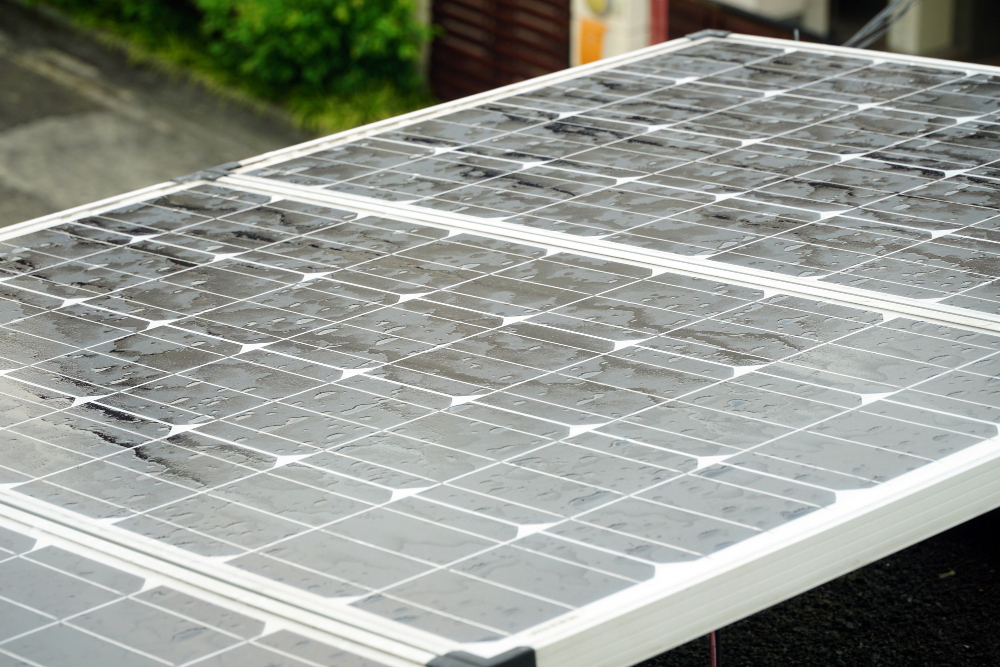Climate change is reshaping the world in many ways, and its impact on renewable energy sources like solar power is a growing concern. While solar energy is often seen as a solution to reduce the effects of climate change, the changing climate also affects solar energy production. Factors such as extreme weather, temperature fluctuations, and altered sunlight patterns can influence how efficiently solar panels perform. In this blog, we’ll explore the impact of climate change on solar energy production and what this means for the future of renewable energy.
Solar Efficiency Under Climate Change
Solar panels are designed to convert sunlight into electricity, but their efficiency can be affected by various factors related to climate change. One of the primary issues is temperature. Solar panels operate more efficiently under moderate temperatures, typically between 15°C and 25°C (59°F and 77°F). When temperatures rise above this range, solar panels can lose efficiency. This means that in hotter climates, especially as global temperatures continue to rise, solar panels may produce less electricity than expected.
In addition to rising temperatures, solar panels can also be impacted by changes in sunlight patterns. For example, as climate change causes more frequent cloud cover in some areas, the amount of direct sunlight available to power solar panels is reduced. This is especially true for regions that may experience more severe or prolonged weather conditions, such as storms or increased rainfall.
Effects of Weather on Solar Output
Extreme weather events, such as hurricanes, floods, and heat waves, are becoming more common due to climate change. These events can have a direct impact on solar energy production. Solar panels are built to withstand different weather conditions, but they are not immune to damage from severe weather.
For example, hurricanes and strong storms can cause physical damage to solar installations, leading to expensive repairs and downtime in energy production. Similarly, heavy rainfall and flooding can reduce the efficiency of solar panels by limiting their exposure to sunlight or causing damage to electrical components. In areas prone to dust storms or high winds, solar panels can become dirty or misaligned, reducing their effectiveness until they are cleaned or repaired.
Conversely, in some regions, changing weather patterns can benefit solar energy production. For instance, less cloud cover in some areas may increase the amount of sunlight reaching solar panels, improving output. However, these benefits are often outweighed by the negative impacts of extreme and unpredictable weather events.
Renewable Energy Resilience
One of the key challenges posed by climate change is ensuring that renewable energy sources like solar power remain resilient. Renewable energy resilience refers to the ability of renewable systems to continue generating energy, even in the face of environmental changes or disruptions. As climate-related events become more frequent, solar energy systems must be designed and maintained with these challenges in mind.
One way to improve resilience is by integrating energy storage systems with solar panels. Battery storage solutions allow excess energy generated during sunny periods to be stored for later use, helping to maintain a stable power supply during cloudy or extreme weather conditions. This ensures that even when solar production is interrupted, households and businesses can still access the energy they need.
Additionally, solar technology adaptation is crucial to ensuring that solar systems can withstand changing climates. Innovations in solar panel design, such as more heat-tolerant materials or self-cleaning panels, are being developed to increase the durability and efficiency of solar installations under various climate conditions.
Climate-Related Solar Challenges
While solar energy offers many benefits, climate change introduces several challenges that must be addressed for solar to remain a reliable energy source. One of these challenges is regional variability. As climate change alters weather patterns, some regions may experience reduced solar potential due to increased cloud cover, more frequent storms, or higher temperatures. This means that solar energy production may not be as reliable in certain areas, particularly those prone to extreme weather.
Another challenge is the cost of maintaining and upgrading solar infrastructure in the face of climate change. For solar systems to remain effective, they must be regularly inspected, cleaned, and repaired. In regions affected by extreme weather, the costs of maintaining solar panels may increase as systems are damaged by storms, floods, or high winds. Additionally, the increased need for battery storage solutions to buffer against variable weather can drive up the cost of solar installations.
Despite these challenges, solar energy remains a critical component of the global transition to renewable energy. As the world continues to grapple with climate change, it is essential to invest in solar technology adaptation and climate-resilient infrastructure to ensure that solar power can continue to play a significant role in reducing carbon emissions.
Solar Technology Adaptation
One of the most promising responses to the challenges of climate change is the ongoing adaptation of solar technology. Researchers and engineers are constantly working to develop new materials and designs that can withstand the effects of climate change.
For example, advancements in solar panel efficiency are helping to mitigate the impact of rising temperatures. High-efficiency solar cells, such as those made from perovskite or bifacial panels, can capture more sunlight even in less-than-ideal conditions, such as on cloudy days or during hot weather. Additionally, more durable materials are being used to create panels that can better resist damage from extreme weather, such as hail or high winds.
Solar tracking systems are another innovation that helps increase the efficiency of solar panels by allowing them to follow the sun’s movement throughout the day. This ensures that the panels are always positioned to capture the maximum amount of sunlight, even as weather conditions change.
Conclusion
The impact of climate change on solar energy production is an important factor to consider as we look to the future of renewable energy. While rising temperatures, extreme weather, and changing sunlight patterns present challenges, innovations in solar technology and energy storage are helping to ensure that solar remains a viable and resilient energy source. By continuing to invest in climate-resilient solar systems and advancing our understanding of solar efficiency under changing conditions, we can maintain solar energy’s critical role in combating climate change and building a sustainable future.




